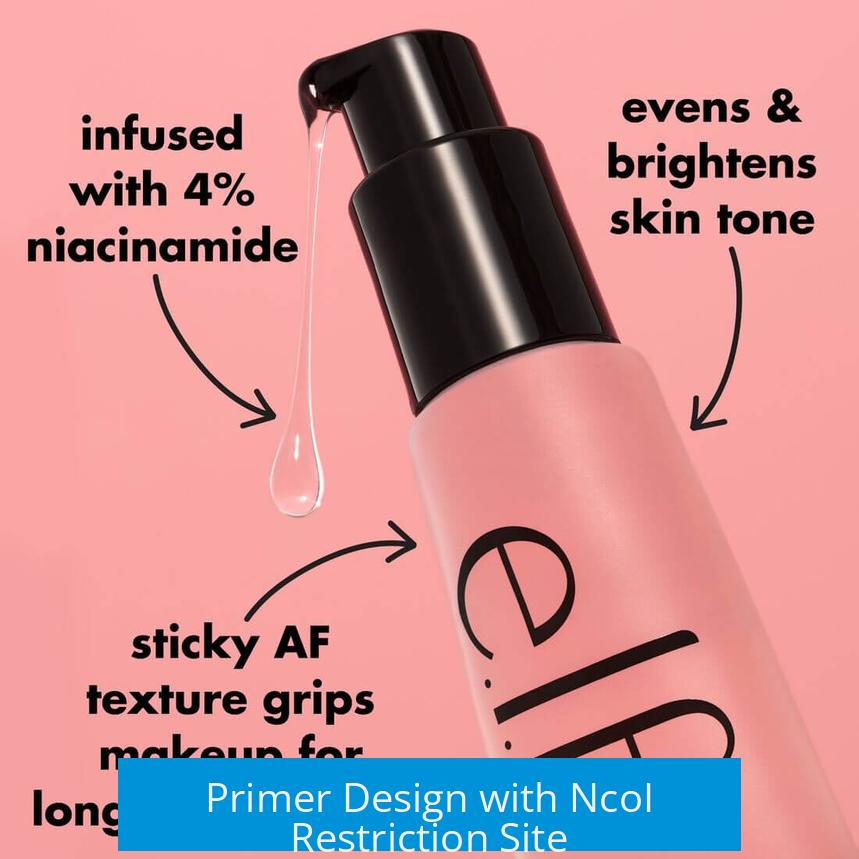Primer Design with NcoI Restriction Site

NcoI restriction site is valuable in primer design because its recognition sequence (CCATGG) includes the ATG start codon, allowing precise cloning of genes in frame with their translation start site. This feature makes it ideal for inserting genes into expression vectors while preserving native translation initiation.
Role of NcoI in Translation Initiation
The NcoI site overlaps with the start codon, which is essential for protein synthesis. The sequence recognized by NcoI is gccaCCATGG, where ATG is the start codon and the upstream GCCACC forms the Kozak consensus. The Kozak sequence plays a critical role in enhancing the efficiency of translation initiation in eukaryotes.
Maintaining the Kozak Sequence
When designing primers with NcoI sites, it is important to include or maintain the Kozak sequence upstream of the ATG. This ensures strong ribosomal recognition and effective translation initiation. Omitting or disrupting this sequence may reduce protein expression levels.
Reading Frame Considerations
Ensuring that the ATG within the NcoI site is in the correct reading frame with the target gene is crucial. If the reading frame is shifted, translation may initiate at a different, out-of-frame ATG, leading to a nonfunctional or truncated protein. Precise alignment between the NcoI recognition site and the gene’s coding region prevents this risk.
Troubleshooting and Pitfalls
- Improper frame alignment can cause zero or low protein expression despite correct cloning.
- There may be alternative ATG sites upstream or downstream influencing translation start.
- Experimental failures often arise from misdesign or lack of proper sequence context.
Expert Advice
Even if the primer design appears correct, it is advisable to consult with experienced colleagues or professors. They can provide insight or confirm that the design preserves both restriction site utility and efficient translation initiation.
Key Takeaways
- NcoI site includes the start codon (ATG), enabling in-frame cloning.
- The Kozak sequence upstream is critical for translation efficiency.
- Frame alignment between the NcoI site and gene must be precise.
- Incorrect design leads to improper protein expression or failure.
- Consultation with experts ensures correct primer and construct design.
What makes the NcoI restriction site useful in primer design?
NcoI includes the ATG start codon within its recognition sequence. This allows precise cloning of genes starting exactly at the translation initiation site, maintaining the correct expression frame.
Why should the Kozak sequence be included in primers with an NcoI site?
The Kozak sequence (GCCACC) before ATG ensures efficient translation initiation. Primers must keep this region intact to promote strong and accurate protein expression.
How does frame alignment affect the use of NcoI in primer design?
The ATG in NcoI must be in the correct reading frame of the target gene. If not aligned, translation may start at the wrong site, producing incorrect or nonfunctional proteins.
What issues arise from improper primer design using the NcoI site?
Misalignment or poor design can lead to poor or no protein expression. Some translation might still happen, but it likely won’t produce the desired protein effectively.
Should I consult an expert when designing primers with an NcoI site?
Yes. Confirming your design with a knowledgeable person, such as a professor, helps avoid errors and ensures your primers will work as intended.





Leave a Comment